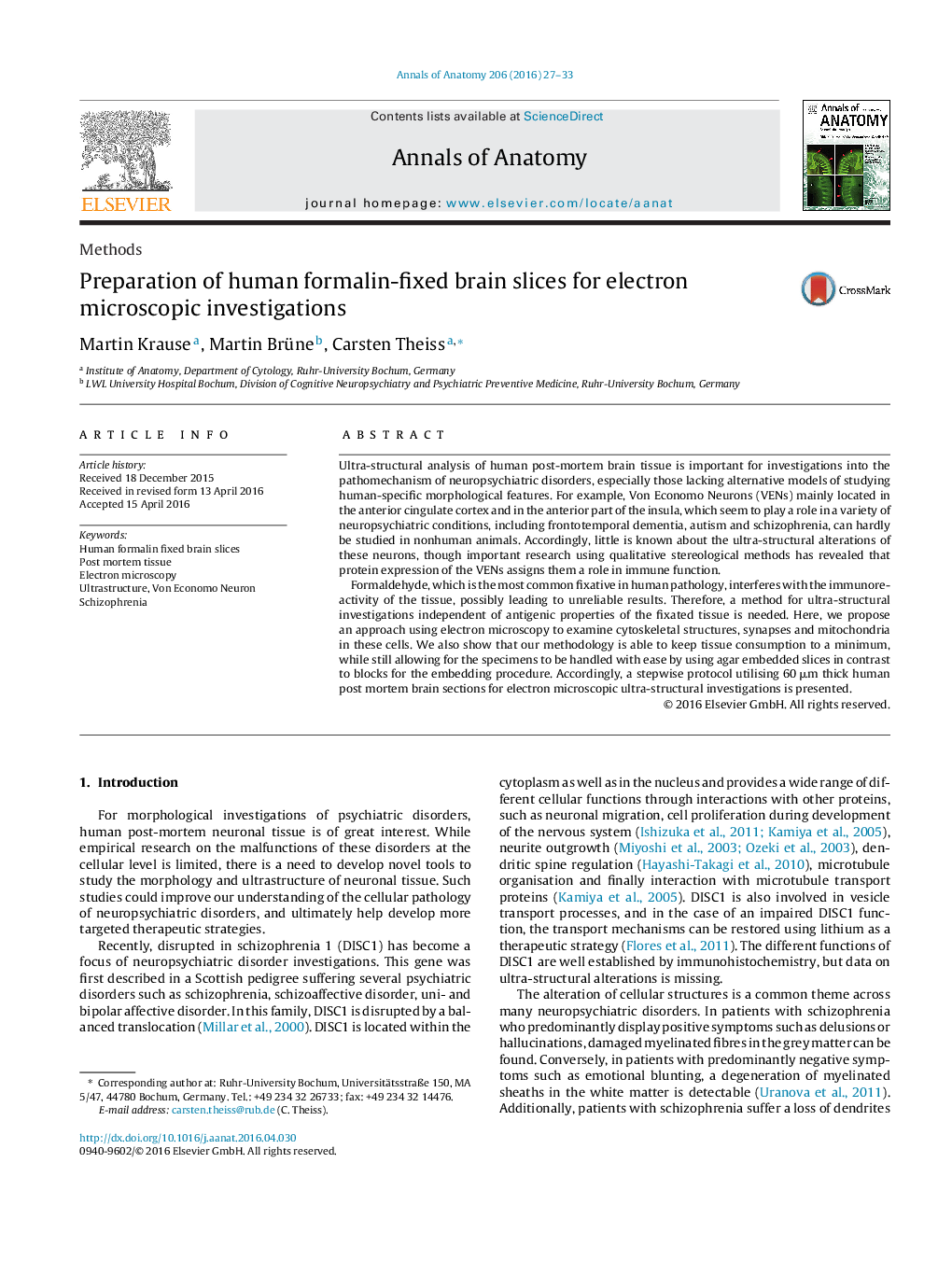| Article ID | Journal | Published Year | Pages | File Type |
|---|---|---|---|---|
| 8460786 | Annals of Anatomy - Anatomischer Anzeiger | 2016 | 7 Pages |
Abstract
Formaldehyde, which is the most common fixative in human pathology, interferes with the immunoreactivity of the tissue, possibly leading to unreliable results. Therefore, a method for ultra-structural investigations independent of antigenic properties of the fixated tissue is needed. Here, we propose an approach using electron microscopy to examine cytoskeletal structures, synapses and mitochondria in these cells. We also show that our methodology is able to keep tissue consumption to a minimum, while still allowing for the specimens to be handled with ease by using agar embedded slices in contrast to blocks for the embedding procedure. Accordingly, a stepwise protocol utilising 60 μm thick human post mortem brain sections for electron microscopic ultra-structural investigations is presented.
Keywords
Related Topics
Life Sciences
Biochemistry, Genetics and Molecular Biology
Cell Biology
Authors
Martin Krause, Martin Brüne, Carsten Theiss,
